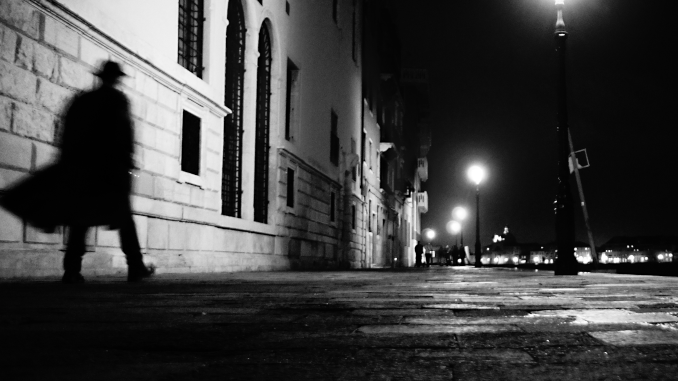
Today’s film is 1954’s “Down Three Dark Streets,” starring Broderick Crawford (Agent Jack “Rip” Ripley), Ruth Roman (Kate Martell), Max Showalter (Dave Milson) (billed as Casey Adams), Martha Hyer (Connie Anderson), Marisa Pavan (Julie Angelino), Kenneth Tobey (Agent Zack Stewart), Gene Reynolds (Vince Angelino), William Johnstone (Frank Pace), Harlan Warde (Greg Barker), Jay Adler (Uncle Max), Claude Akins (Matty Pavelich), Joe Basselt (Joe Walpo), and Suzanne Alexander (Brenda Ralles). Directed by Arnold Laven; cinematography (Director of Photography) Joseph F. Biroc. Produced by Arthur Gardner and Jules V. Levy. Screenplay by “The Gordons” (Gordon and Mildred Gordon) and Bernard C. Schonefeld; based on the 1953 novel “Case File: FBI,” by “The Gordons.”
Writing team “The Gordons” (married couple Gordon and Mildred Gordon) had a series of novels centering on their FBI Agent character Jack “Rip” Ripley; this was the first of these books to be translated to film by them. Amusingly enough, another in their book series, “Undercover Cat” was adapted for the screen as “That Darn Cat.”
The film begins with Agent Zack Stewart investigating three different cases at the same time (something the voiceover announcer tells us is standard practice): the first involves wanted criminal Joe Walpo, who shoots a gas station attendant dead as he heads for Los Angelas; the second case involves a car theft ring; and the final case is one of a widow being the victim of an extortionist.
Stewart and his partner, Jack Ripley are called by witness Brenda Ralles to come to her apartment at 11:00 PM — she’s quite insistent the meeting can’t take place any earlier. When they arrive about five minutes early, she tells them to go; but they notice the kitchen door closing, indicating a visitor has slipped out the back way. Stewart goes around to the alley behind the apartment and ends up being shot by someone hiding in the bushes. So Ripley is left to try to solve all three of Stewart’s open cases, in the hope of also finding his partner’s killer.
The movie is filmed on location in Los Angelas and makes use of local color, including the iconic Hollywood sign itself. (Nowadays you can’t get anywhere near the sign, but back in the 1950s the sign was quite accessible by the public. As a matter of fact, actress Peg Entwistle jumped from the “H” to her death back in 1932.)
The film is in the crime/investigator sub-genre of noir, being basically a noir police procedural. On first viewing, this seemed more like a straight police procedural than a noir film, but it does have a noir flourish or two. (Mainly with the slat-shadows of venetian blinds in several scenes. There’s also a few night scenes which are suitably atmospheric.) However, when I watched again this morning, I could see more of what would qualify it as noir.
I thought the production was top-notch and it was well-acted, but the resolution felt a bit “pulled out of a hat,” because there seemed to be no explanation offered as to how Brenda Ralles was connected to the killer. For that reason, it rates 3.5 unfiltered cigarette puffs out of 5.
Next week’s film is 1957’s “The Strange One.”
Before I log off for today, I want to share something for Father’s Day (which, yes, I know was last Sunday) that aired last week on CBS Sunday Morning. It’s a segment on Jim Croce and his son, musician AJ Croce.
As always, this is an open thread, so feel free to discuss whatever you like in the comment section down below. And remember, you can walk down one or two, but never go down three dark streets at once!
